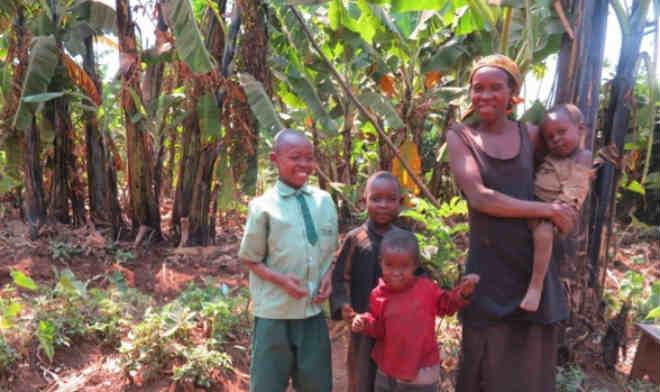When Anonciatha brought her four-year-old son, Bertin, to Nyaconga Health Center in the Gasabo District of Rwanda, he weighed only 22 pounds. That is 13 pounds less than a healthy child his age should weigh. Like nearly half of all children in Rwanda, Bertin suffered from chronic malnutrition.
By now, most people have heard the sobering statistics that surround malnutrition. According to a recent report published by Save the Children, malnutrition impacts 165 million children globally – enough children to “form a ring around the earth.” Not only is malnutrition a leading cause of early childhood deaths in the developing world, it limits the potential of children who survive. In Rwanda, where we work with Gardens for Health International, an estimated 44 percent of children under the age of five suffer from chronic malnutrition. Educational outcomes, earning potential, and life expectancy all plummet when children don’t get the nutrients they need to grow and develop.
Unfortunately, the story of Anonciatha and Bertin is a common one. It is estimated that 70 percent of malnourished people in the world are smallholder farmers, like Anonciatha. She tends the small plot of land surrounding her house, and earns extra income for her family as a laborer on a neighbor’s farm. Despite her efforts and her desire to see Bertin healthy and thriving, he was suffering from severe malnutrition when she brought him to Nyaconga Health Center.
That is where Anonciatha’s story starts to change. Instead of leaving the clinic with only a diagnosis and a prescription for food aid – which certainly saves lives, but doesn’t address the underlying conditions that lead to malnutrition – the nutritionist referred Anonciatha to our program.
We partner with health clinics in Rwanda, including Nyaconga Health Center, to bring lasting agricultural solutions into the clinical treatment of malnutrition. These partnerships ensure that families like Anonciatha’s, not only receive short-term medical interventions but that they also get the seeds, livestock, education and support to feed their children and keep them healthy over the long term.
For Anonciatha, the Gardens for Health training was “the first time I learned what a balanced meal was.” Not only did Anonciatha learn what to feed her children – our agriculture programming gave her the seeds and skills to put that knowledge into action. “It was easier for me to make a balanced meal once my garden grew because I had all [types of food] in my garden.”
Twelve months later, surrounded by the amaranth, beets, carrots, beans, potatoes and peanuts she planted, Anonciatha grins and proudly reports that her son is thriving. Bertin has gained nearly seven pounds, and is officially at a healthy weight. He is not alone—one year after enrolling in our program, 71 percent of children we worked with are healthy.
For farming families like Anonciatha’s, including agriculture as part of the clinical treatment for malnutrition makes a lot of sense. Instead of a band-aid solution, Anonciatha was armed with the knowledge and resources to overcome malnutrition for herself, and for her children.













